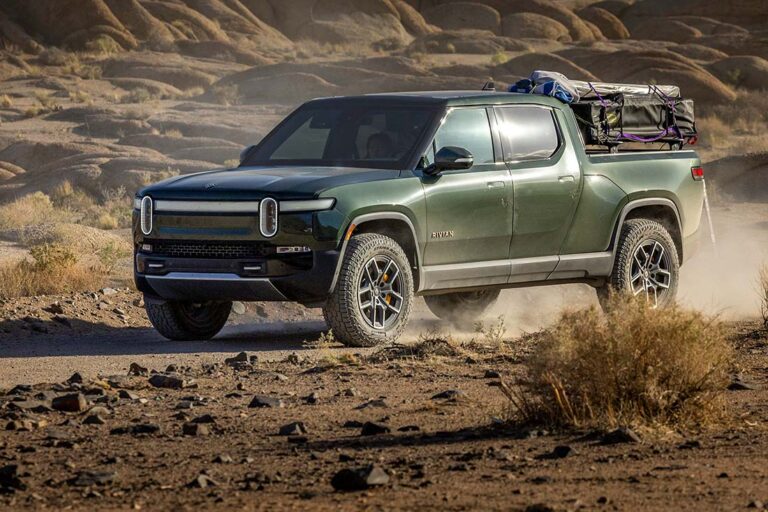What types of electric vehicles does Volvo offer?
Volvo offers three types of electric vehicles: fully electric models (BEVs) including the EX40, C40 Recharge, EX30, EX90 and upcoming ES90; plug-in hybrids (PHEVs) including the XC90, XC60, S90, S60, V90 and V60; and mild hybrids for improved efficiency.
The Swedish Electric Revolution Begins
Ever wondered what it would be like if your car could glide silently through city streets? Imagine driving with nothing but electricity, all while enjoying that distinctive Scandinavian design. Volvo has been pondering this very question for quite some time now.
The Swedish automaker, long known for prioritizing safety above all else, has been plotting a seismic shift toward electrification. This transformation would make even the most ardent fossil fuel enthusiast raise an eyebrow of intrigue.
The automotive world races toward a future where the smell of petrol is replaced by the hum of electric motors. Meanwhile, Volvo has been quietly but determinedly staking its claim in this brave new world.
Let’s explore Volvo’s electric revolution—where they’re headed, what they’re driving, and whether they’ll deliver on those ambitious electrification promises.
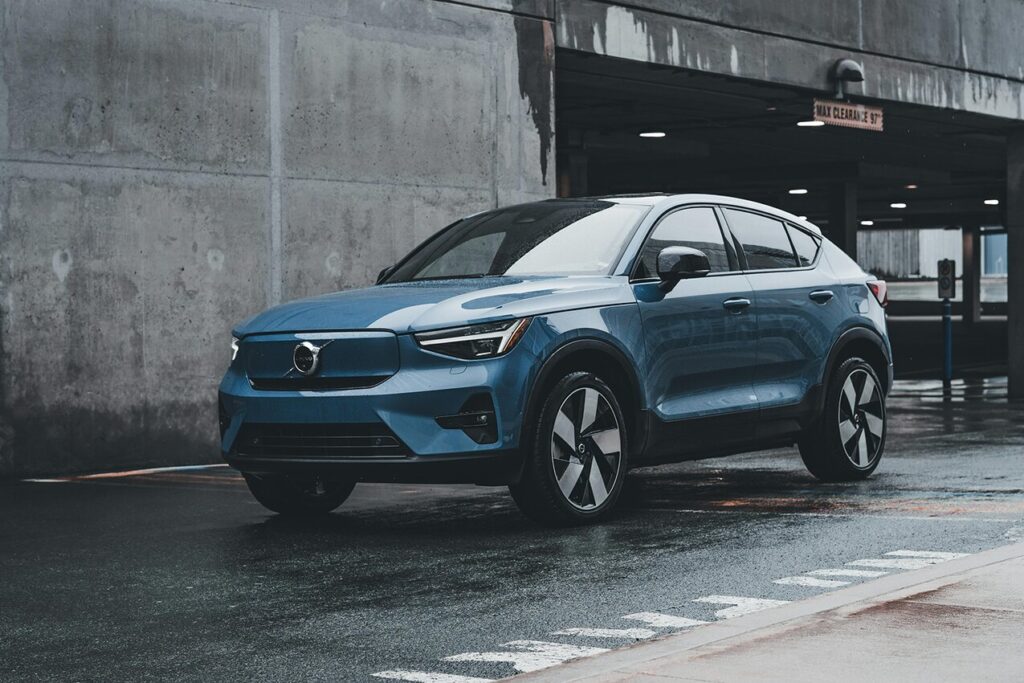
From Safety Pioneers to Electric Innovators
Safety DNA Meets Sustainable Vision
Volvo has long been synonymous with safety innovations. From the three-point seatbelt to crumple zones, the Swedish brand has always put human protection first. In recent years, Volvo has added another core value to its corporate DNA: sustainability.
Timeline Adjustments
The company’s initial plan was admirably straightforward – become fully electric by 2030. Bold and decisive, exactly what you’d expect from those no-nonsense Swedes. But reality has necessitated some recalibration.
Volvo has adjusted its expectations. They now aim for 90-100% of sales by 2030 to be electrified vehicles. This includes both fully electric options and plug-in hybrids. The deadline for becoming fully electric has moved to 2040.
Pragmatic Approach
This isn’t necessarily a retreat from their electrification strategy. Rather, it’s a pragmatic acknowledgment that the transition might take longer than hoped. It’s like promising to completely give up carbs by next month, then realizing a gradual reduction might be more sustainable.
Volvo’s commitment to electrification remains robust, just with a slightly extended timeline.
The Current Lineup: Volvo’s Electric Fleet
Fully Electric Models: The Zero-Emission Champions
Volvo’s fully electric lineup is growing steadily. Several compelling options are already available with more on the horizon.
EX40 (formerly XC40 Recharge)
The XC40 Recharge was Volvo’s first foray into the fully electric market, and it set the tone for what was to come. Now rebranded as the EX40, this compact SUV offers impressive capabilities:
- Estimated maximum range of 293 miles
- Available in both single and dual motor configurations
- The twin motor variant now offers a Performance software pack that boosts power to a substantial 436 horsepower
The EX40 maintains Volvo’s reputation for building vehicles that are both practical and pleasurable to drive. It’s the automotive equivalent of a sensible pair of shoes that happen to be surprisingly comfortable for dancing.
C40 Recharge
The C40 Recharge takes the EX40’s platform and adds a dash of coupé styling, creating a more fashion-forward electric SUV. It’s essentially the same dependable electric vehicle underneath, just with a more rakish haircut. It’s worth noting that in Europe, this model has been rebranded as the EC40, aligning with Volvo’s revised naming convention for electric vehicles.
EX30
The EX30 is Volvo’s newest and smallest electric SUV, and it’s quite the pocket rocket:
- Acceleration from 0-60 mph in just 3.4 seconds (in the Performance variant)
- Fast charging capability from 10% to 80% in just 26.5 minutes
- Starting price of $44,900 MSRP for the Twin Motor Performance variant
This compact electric SUV combines surprising performance with Volvo’s renowned safety features, all wrapped in a package that’s small enough to navigate urban environments with ease. It’s like having your cake, eating it too, and then finding out the cake is actually good for you.
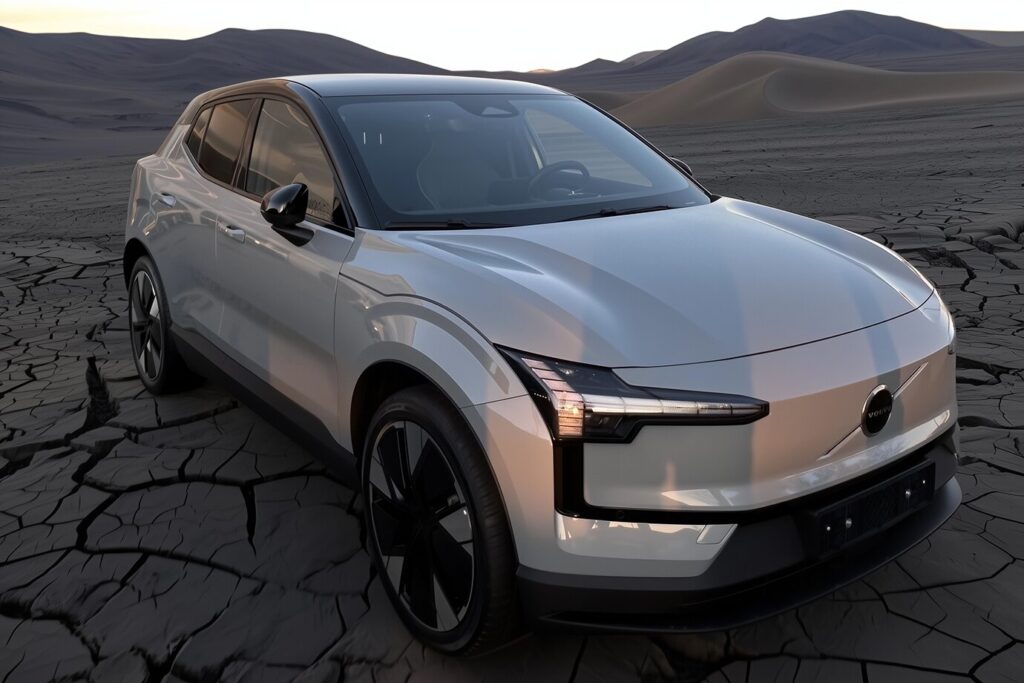
EX90
The EX90 represents Volvo’s flagship electric SUV, positioned to replace the XC90 as the company’s premium seven-seater offering. The specifications are impressive:
- Estimated range of 308 miles
- Power output of up to 510 horsepower
- Acceleration from 0-60 mph in 4.7 seconds
- Fast charging capability from 10% to 80% in about 30 minutes
The EX90 is designed to be Volvo’s technological showcase, demonstrating that electric vehicles can be spacious, luxurious, and capable of long-distance travel without compromise.
ES90 (upcoming)
The ES90 is Volvo’s upcoming fully electric large saloon, set to launch in 2025. This model represents Volvo’s entry into the electric luxury sedan market, with specifications that promise to make it a compelling competitor:
- Range: Up to 435 miles (700 km)
- Battery: 106 kWh
- Charging: 10-80% in just 20 minutes
- Power: Up to 680 hp (Twin Motor Performance)
- Acceleration: 0-62 mph (0-100 km/h) in 4 seconds
- Cargo capacity: 446 liters
The ES90 is positioning itself as a long-range electric flagship sedan, combining Volvo’s commitment to safety with impressive performance metrics and luxury amenities. The remarkable charging speed and substantial range suggest that Volvo is addressing two of the most common concerns about electric vehicles: charging time and range anxiety.
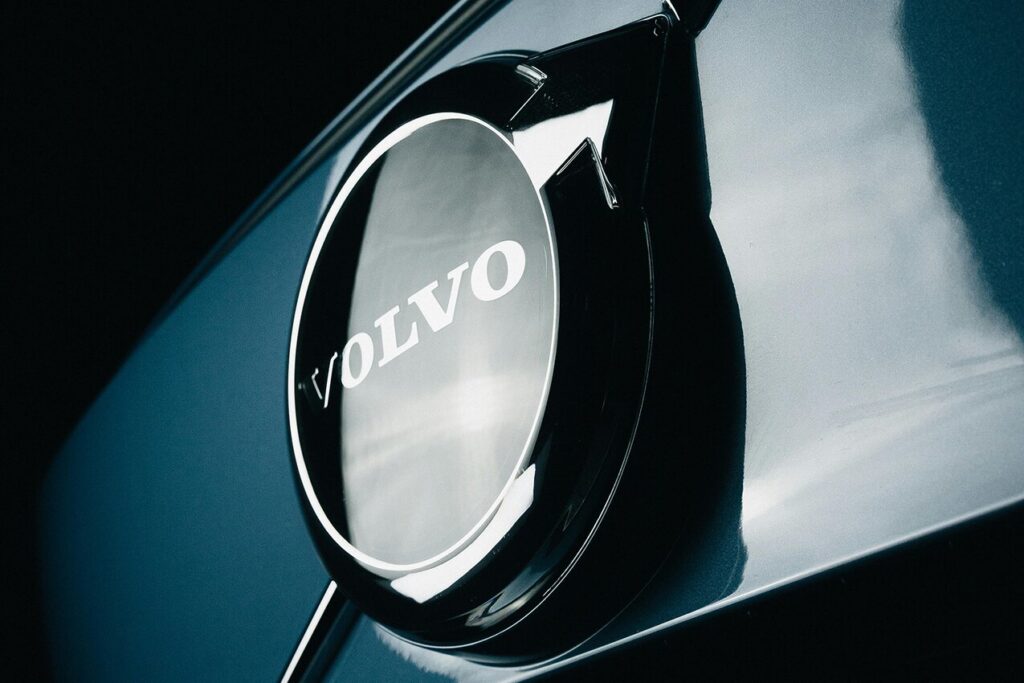
Plug-in Hybrid Vehicles: Bridging Two Worlds
Volvo offers several plug-in hybrid vehicles in the United States. These provide a bridge between traditional engines and fully electric driving. The current PHEV lineup includes:
Volvo’s current plug-in hybrid offerings include:
- XC90 Recharge Plug-in Hybrid
- XC60 Recharge Plug-in Hybrid
- S90 Recharge Plug-in Hybrid
- S60 Recharge Plug-in Hybrid
These vehicles typically offer 20-30 miles of electric-only range. This covers daily commutes while keeping a conventional engine for longer trips. Think of it as having a bicycle with a backup motor – virtuous most of the time, with assistance when needed.
European Market Differences
The European market enjoys additional plug-in hybrid options not available in the United States:
- V90 Recharge Plug-in Hybrid
- V60 Recharge Plug-in Hybrid
These wagon (estate) models are particularly popular in European markets. Their combination of practicality, performance, and partial electrification appeals to families and professionals alike.
Mild Hybrid Vehicles: First Steps to Electrification
Volvo also offers mild hybrid technology across its range. This provides meaningful improvements in fuel efficiency and emissions reduction. These vehicles use a small electric motor to assist the combustion engine. They recover energy during braking and provide a boost during acceleration.
While less dramatic than their fully electric siblings, mild hybrids represent an important step in Volvo’s electrification journey. They offer improved efficiency without requiring changes to driving habits or charging infrastructure.
Volvo’s Electrification Strategy: The Road Ahead
Revised Targets and Milestones
Volvo’s electrification strategy has evolved over time. It reflects both company ambitions and market realities. The current roadmap includes:
- By 2025: 50-60% of global sales to be electrified vehicles
- By 2030: 90-100% of sales to be electrified cars (both battery electric and plug-in hybrid)
- By 2040: Fully electric car company
These targets represent a significant shift for a company primarily known for diesel and petrol vehicles. The journey from safety pioneer to electric champion continues, though at a slightly more measured pace than initially planned.
Battery Supply and Partnerships
To support its electrification ambitions, Volvo has invested heavily in battery technology and supply chains. They’ve signed large supply deals with battery manufacturers LG Chem and CATL. This ensures a stable supply of lithium-ion batteries for their growing electric lineup.
This focus on battery supply shows Volvo’s understanding that successful transition requires more than just vehicle design. They must also secure the components that power these new vehicles.
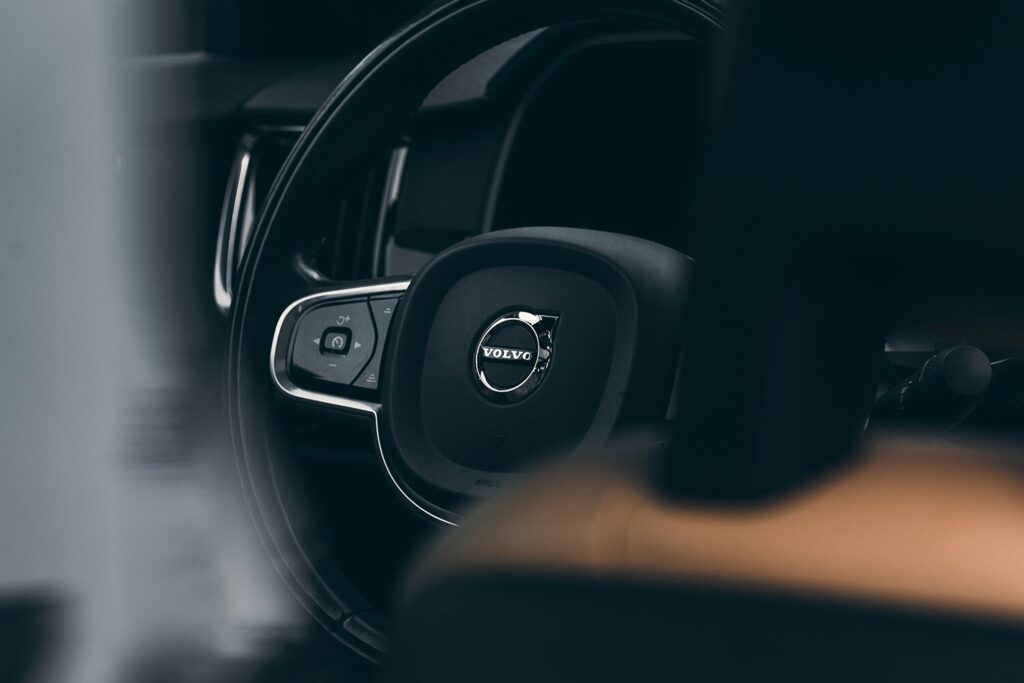
Swedish Automotive Innovation: A Holistic Approach
Beyond Just Electric Motors
What sets Volvo apart is their holistic view of sustainable mobility. Rather than simply replacing engines with motors, they’re rethinking entire vehicle lifecycles.
This includes:
- Responsible material sourcing
- Designing for longevity and recyclability
- Creating more environmentally friendly manufacturing
- Promoting renewable electricity for charging
This comprehensive approach reflects Volvo’s Swedish heritage of pragmatic environmentalism. It’s not just about eliminating exhaust fumes. It’s about creating a sustainable transportation system from cradle to grave.
Navigating Challenges and Opportunities
Realistic Hurdles
Volvo’s revised timeline acknowledges several challenges in the transition away from fossil fuels:
- Need for expanded charging infrastructure
- Battery technology limitations compared to fossil fuel convenience
- Consumer hesitation about new technology
- Higher initial costs of electric vehicles
Strategic Advantages
These challenges also create opportunities for innovation. Volvo’s reputation for safety and quality positions it well to address consumer concerns about reliability and performance in electric vehicles.
Conclusion: The Electric Road Ahead
A Measured but Determined Approach
Volvo’s journey toward electrification represents one of the most ambitious transformations in the automotive industry. From safe, solid, conservative vehicles, Volvo is reinventing itself as a sustainable mobility leader.
The revised timeline for full electrification – now targeting 2040 instead of 2030 – reflects realistic planning. The complexities of transitioning an entire ecosystem from combustion to electric power require time. What remains unchanged is Volvo’s commitment to creating vehicles that are both desirable and environmentally responsible.
Expanding Electric Horizons
As Volvo continues expanding its electric lineup with the EX30, EX40, EX90, and upcoming ES90, their commitment is clear. They’re not just talking about electrification – they’re building it. The road to a fully electric future may be longer than initially planned, but Volvo remains firmly in the driver’s seat.
Options for Every Driver
For consumers considering electric vehicles, Volvo offers options across different segments and price points. Whether you prefer fully electric models like the EX30 or EX40, or the flexibility of plug-in hybrids like the XC60 or S90, their strategy provides choices that match various needs and comfort levels with electric technology.
Swedish Values, Electric Future
Volvo’s approach to electrification mirrors its approach to safety: thoughtful, comprehensive, and focused on clear goals. Just as they reimagined automotive safety, they’re now reimagining propulsion for a sustainable future.
A future with cars as quiet as they are safe, as efficient as they are elegant, and as environmentally friendly as they are enjoyable to drive? That’s a future worth pursuing.
Frequently Asked Questions About Volvo’s Electric Vehicles
1. When will Volvo become a fully electric car company?
Volvo initially aimed to be fully electric by 2030, but has since revised this timeline. The company now plans to reach full electrification by 2040, with an intermediate goal of having 90-100% of its sales consist of electrified vehicles (both fully electric and plug-in hybrids) by 2030.
2. What’s the difference between Volvo’s fully electric and plug-in hybrid vehicles?
Fully electric Volvos (like the EX30, EX40, and EX90) run exclusively on battery power with no tailpipe emissions. Plug-in hybrids combine a conventional engine with an electric motor and battery, allowing for 20-30 miles of pure electric driving before switching to hybrid mode, offering flexibility for longer journeys without charging infrastructure.
3. Which Volvo electric vehicle has the longest range?
Currently, the upcoming Volvo ES90 is expected to offer the longest range at approximately 435 miles (700 km) on a full charge. Among available models, the EX90 offers an estimated range of around 308 miles, followed by the EX40 with up to 293 miles.
4. Are Volvo’s electric vehicles more expensive than their conventional counterparts?
Like most electric vehicles, Volvo’s electric models typically have a higher initial purchase price than their combustion engine equivalents. However, lower running costs (electricity vs. fuel, reduced maintenance) can offset this difference over time. The EX30, starting at $44,900 for the Twin Motor Performance variant, represents one of the more competitively priced entry points into Volvo’s electric lineup.
5. How does Volvo’s approach to electrification compare to other manufacturers?
Volvo’s electrification strategy stands out for its comprehensive approach to sustainability beyond just replacing engines with motors. The company is focusing on responsible material sourcing, manufacturing processes, and vehicle lifecycle management. Unlike some competitors who are jumping straight to full electrification, Volvo is taking a more measured approach with a mix of fully electric vehicles, plug-in hybrids, and mild hybrids to ease the transition for consumers while still making significant progress toward reducing emissions.
Maximize Your EV Battery’s Lifespan
Want to get the most from your Volvo’s electric battery? Charging habits, temperature management, and driving techniques all impact battery health and performance. Discover essential care tips in our EV Battery FAQs and keep your electric Volvo running at its best!
